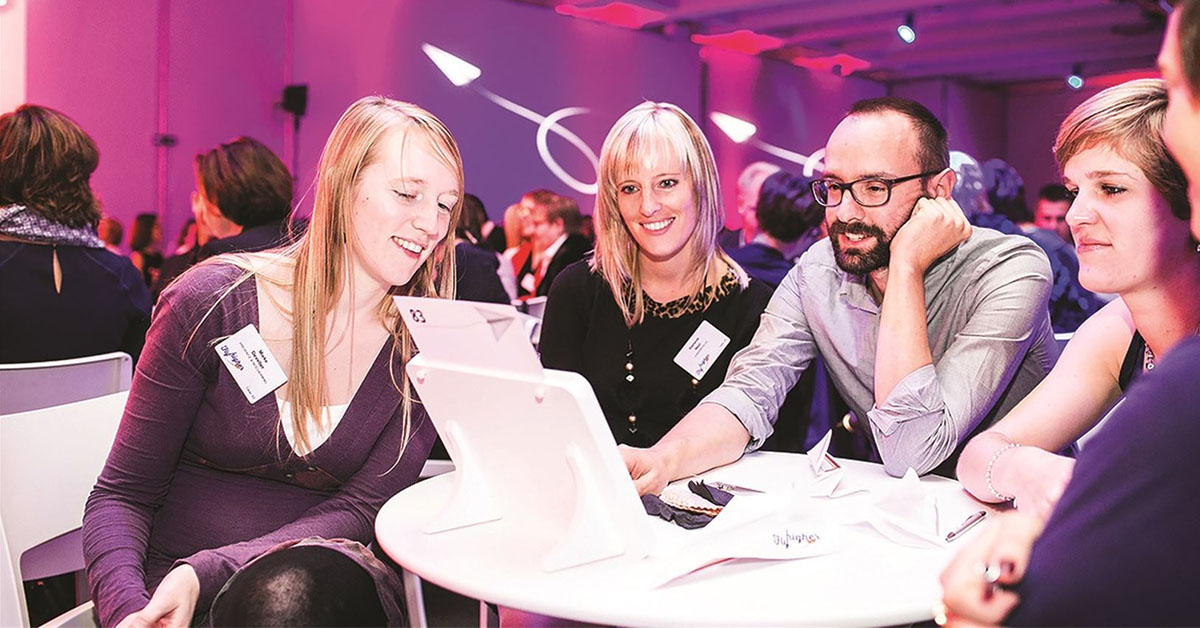Should you use technology in team building?
Digital technology in the workplace – including in team building activities – has become increasingly prevalent, resulting in digital fatigue among workers.
While technology can have a positive impact on business efficiencies, growth, employee engagement, and is key to jobs of the future, the potential negative impacts must also be considered and managed.
Most readers of this article will have experienced “Zoom Fatigue” after their fifth video meeting of the day during the height of the COVID pandemic. However, video conferencing tools are only part of the digital fatigue picture.
People are becoming increasingly overwhelmed and frustrated by digital technology as the number of devices and subscriptions they manage increases, according to 2021 Deloitte research.
And you don’t need Deloitte research to see why. The smartphone or smartwatch is the first thing most people see in the morning, and they deliver an endless flow of notifications through the day: messages, emails, likes, comments, apps, and other software demanding attention.
Long before COVID, Be Challenged was using proprietary team building apps and programs to deliver better team-building outcomes.
For example, in-person events often blend our popular virtual reality-based program, The Infinite Loop, app-based team building game, Quickfire, or digitally driven scavenger hunt, Go Team to drive engagement and alignment around a message.
In 2020, these tools and programs were adapted and developed for use in online and hybrid team building environments. They were instrumental in keeping businesses connected during the pandemic and remain so today in this new way of working.
It damages our ability to focus, reduces productivity, requires constant attention to keep up with, and combined with the blurring boundaries of work and home, means it is increasingly difficult for people to switch off.
Add to that the digital transformation that most business are undergoing, and employees being required to learn and navigate new digital systems and tools, and it is not difficult to see why digital fatigue has set it.
Should you harness technology in team building?
The benefits of face-to-face interaction with colleagues include more positive social relationships, better staff retention and more motivation, so where possible always conduct team building activities in-person.
However, what about using technology and digital devices in your face-to-face team building activities?
Tech can have a phenomenal impact on the engagement and key outcomes of your face-to-face team building activity, however, it will also add to the already significant digital workload required of participants.
When deciding, consider how much digital workload your team is already dealing with. Are they learning any new business tools or software? Are they working in a face-to-face environment, or still conducting many meetings on Zoom?
Given the digital fatigue that many workers are likely facing after two years of lockdowns, it might be wise to free your team from any digital burdens with an interactive non-digital program such as Hole in One or Flat out F1.
Then, as things settle, you can look to re-embrace digital technology and devices in some – but not all – of your team building activities.
How to minimise digital fatigue
- Discourage multitasking: Multitasking has been consistently shown to reduce productivity and increase stress, anxiety, and fatigue. Focus on one task at a time. Do it well and with purpose.
- Turn off notifications: Whether you are deep in thought on a project, or on the couch watching a movie, a notification is enough to break your focus and contribute to digital fatigue. Turn off notifications so you choose when and where to engage.
Conduct a tech audit: At the start of COVID, people adapted quickly, as best they could, and there may still be redundant legacy tools and processes in place. It may be using multiple tools where one would do, or there may be unnecessary tools that are not adding value. - Conduct training: It is exhausting learning new digital tools, especially without training and support. Ensure your team has the support and resources they need to effectively use the tools they are expected to.
- Reconsider meetings: Many meetings we have are unnecessary, or do not require the entire team to attend. Whether you are creating a meeting or being invited to one, carefully consider whether it is worth attendance. And if it is, can you attend in person, or even hold it outside of the office?
- Ensure a seamless digital employee experience: People expect a seamless digital experience from all brands they interact with, including their employer. Ensure you have a multi-channel employee experience strategy that enables accessible flexibility and control.





